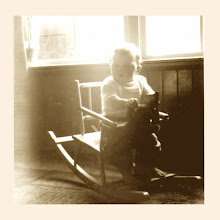With the release of yet more compilations of
Franco's extensive repertoire it may seem amazing to some that there are still plenty of songs that have not been published in digital form. And I am sure you will be even more amazed when you hear the quality of some of these compositions.
In this post I would like to share three singles with you, all from what many consider to be Franco's
heyday. Personally I am more inclined to believe that Franco's whole career existed of one big heyday, or at least an impressive series of
peaks. The particular heyday I am referring to started more or less when
Sam Mangwana joined the O.K. Jazz. A lot has been written about this move, and I will post Sam's own views about this at a later date.
For now, I would like to stick to the music.
The first of these singles is from 1973. On the A-side is one of the earliest tracks of Mangwana with the O.K. Jazz, "Cedou". Remarkably he is only present as a backing vocalist in this composition by rhythm guitarist
Lutumba Simaro (whose compositions* were crucial to the
evolution of the O.K. Jazz in this turbulent period). The leading vocals are by
Michel Boyibanda and Franco, and
Lola Djangi 'Chécain' is present in the background. But Mangwana's contribution is nevertheless impressive, and certainly meant a shift towards a more melodic style for the O.K. Jazz.
Franco's own intentions in this respect are illustrated by the B-side, "B.S.K.". A brilliant bolero sung by Franco himself, accompanied by the full horn section of the Tout Puissant O.K. Jazz. I hope someone can explain to me why this
masterpiece has never been digitized.
Note, by the way, that Franco did play this song in a
concert in Amsterdam in January 1989.
Fiesta 51.198 B
The second single is from 1974. "Mele", the A-side, was composed by Chécain, who was seen by his colleagues as the main representative of the 'old' style of the O.K. Jazz. In my opinion it was a stroke of pure genius to combine the voices of Mangwana and Chécain, and this is probably one of the best examples of this
golden combination. Chécain sings the 'seconde', i.e. the lower of the two vocal parts which adjusts to back the main melody of the song. He has a rather sad, but slightly dry and understated singing style, while Mangwana's voice soars and flows with the melody. To me, Chécain's backing turned Mangwana into an O.K. Jazz style singer.
As Mangwana prepares for the solo, Michel Boyibanda comes in to support Chécain. But some echo is put on to his vocal, adding distance to his singing, while Chécain remains in the foreground. Trumpets come blaring in and Sam launches into his solo. After just over four minutes Franco takes control and leads his orchestra into a full-force climactic finale.
It is not surprising that Chécain had a preference for working with Mangwana in his compositions, e.g. in "Lukika" (which is sometimes incorrectly attributed to Franco) and the 1975 track "Toboyana Kaka".
The B-side, "Mowunbu Ya Makanisi" (titled "Bano Brekete" on the Kenyan release "In Memoriam Vol. 9"), was a song composed by Franco, and is sung by Franco himself and
Youlou Mabiala, who had already ventured outside of the O.K. Jazz, but had returned (and would soon leave again). The song starts off in a rather conventional old style O.K. Jazz manner, but after almost two and a half minutes breaks into rather unusual solo by Franco, in which he almost hammers the chords.
Pathe 2 C006 15717
The third record of this post, "Tata Na Bebe 1 & 2", is one I posted
earlier, but in a different setting. And, on closer study, I have changed my mind about the dating of this song. The use of four vocalists and the guitar sound are indications it must be from 1974.
The song opens with two rounds of solo vocals by (in this order) Sam Mangwana,
Josky Kiambukuta, Michel Boyibanda and Franco, followed by two more rounds in the same order, but with a chorus filling in the gaps. At the end of part one, Franco is about to steer the orchestra into a rousing, nose-down, kamikaze style
sebene.
This also means that the first two and a half minutes of part two are a copy of the last two and a half minutes of part one (you can check this if you like...), and the recorded track lasted less than seven and a half minutes (the result of joining the two unique parts can be found
here). This is, by the way, not unusual for tracks from this period. My impression is that this was due to the technical limitations I wrote about in an
earlier post about Haruna Ishola (who was the co-owner of one of the most advanced recording studios in Africa).
Getting back to the subject of digitizing Franco's
oeuvre, only one of the five** tracks in this post has been released on CD. The four other tracks seem essential to the understanding of how the O.K. Jazz became the Tout Puissant O.K. Jazz, - while staying O.K..
Editions Populaires EP 205
* "Ebale Ya Zaire", "Mabele", "Minuit Eleki Lezi" - to name just three.
** counting the two parts of "Tata Na Bebe" as one.
EDIT July 7, 2016: all three singles in
one file.







-(foto-Ton-Verhees).jpg)

























